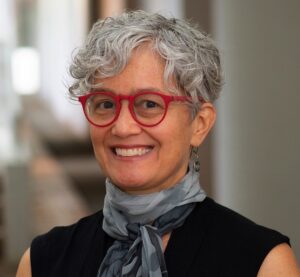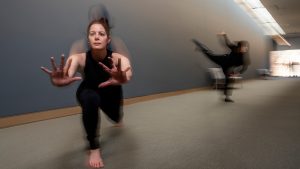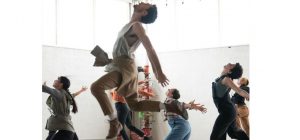
Festival Celebrates Decade of Dance Film
The UNC Greensboro School of Dance and Sugarfoote Productions announce the 10th annual Greensboro Dance Film Festival (GDFF) to be held Friday, February 23rd and Saturday, February 24th.
GDFF, the first of its kind to reside in Greensboro, features dance films from 23 countries in both student and professional categories. An opening reception will be hosted at Oden Brewery on Friday February 23rd. A full screening and live dance and music performances take place on Saturday, February 24th at Transform GSO. The programs will also feature works that specifically address issues of race, place, and identity in a modern and ever-changing world and will be designed for and unique to the space. All events are free and open to the public.
UNCG Professor of Dance Robin Gee, Founder and Director of GDFF, says the combination of dance and film opens a broader world for choreographers and dancers.
“Merging performance and cinematic aesthetics, screen dance has expanded the possibilities of choreographic composition and structure by pushing the boundaries of dance beyond its staged possibilities. GDFF is a boutique film festival seeking to connect diverse populations through the innovative genre of dance on screen. In addition to highlighting dance films from around the world, this festival he supports artists through interdisciplinary collaboration and artistic exchange.”
This year, the festival welcomes guest curator Hannah Fisher for additional workshops and screenings on UNCG’s campus and in the community. GDFF will culminate with a touring program in Italy as part of the first annual Corciano Dance Film Festival on July 20th, 2024.
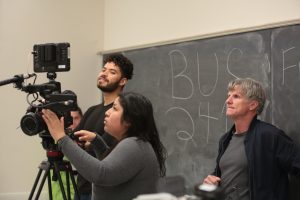
The Making of a Web Series: I ❤️ Collaboration
I❤️Collaboration, a thirteen-part web series developed by students and faculty in the School of Theatre, School of Music, and Department of Media Studies can be seen as a training ground, a recruiting tool, and now, as a contender in a comedy film festival.
More about that later. First, let’s roll back the tape to where it all started:
“We’d been talking for years—even before the pandemic made us take everything online for a while—about adding some sort of video component to our theatre season,” says Michael Flannery, Associate Professor of Acting for the Camera. “We did a trio of short films two years ago, and I thought this time it would be fun to do a mockumentary, something sort of like The Office.”
Flannery worked with two students, Andre Otabor and Jeffrey Payton, both seniors in the BFA Acting Program, to brainstorm what that might look like. They wound up with a story about college students whose final exam is hijacked by the graduate teaching assistant who was humiliated by someone in the class, and they are forced to complete a scavenger hunt to pass. (more…)
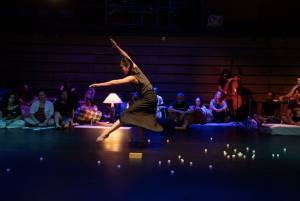
Meet the Meshroom: A Mash-Up of Art, Dance, and Music
“Drop In. Drop Out. Bring a Friend.”
That is the tag line for a new event coming to UNC Greensboro in February through a partnership between Duke University Arts and the UNCG School of Dance.
Those are also literally the only instructions for the event, according to Caitlyn Schrader (’22 MFA Dance), CVPA’s Director or Community Engagement, who is co-curating the event, along with School of Dance Director Lee Walton and kt williams (’23 MFA Dance).
The event is called Meshroom, and Schrader promises that it will be an experience that you will not soon forget:
“It’s kind of wild. You walk into something that is so unfamiliar. It’s almost difficult to describe because it is so experimental. It’s not like ‘come see this play’ or ‘come see this dance performance,’ because it’s not that. It does involve work from visual artists, musicians, and movement artists, but there’s no stage, no script, no rehearsals. It is strictly improvisational. It’s more about process than product.” (more…)
